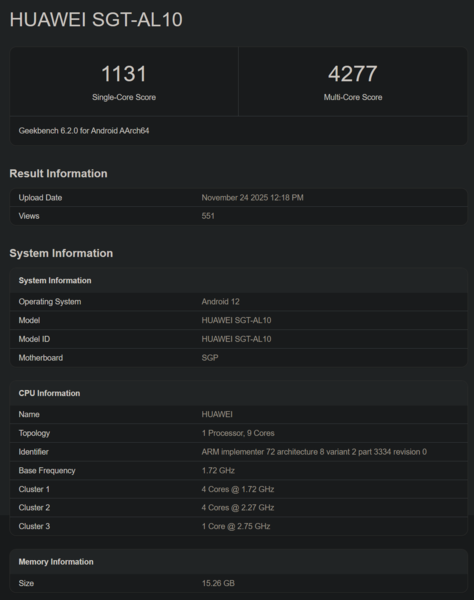SMIC had achieved a significant breakthrough in its semiconductor manufacturing prowess. It has successfully fabricated its first-ever 5 nm-grade smartphone SoC via its N+3 process node, which was in development since last year. With a transistor density of roughly 125 Mtr/mm2, it can be compared with Samsung's 5LPE node. The chip in question is the Kirin 9030, and it will power the upcoming Huawei Mate 80 series of smartphones.
It was spotted on Geekbench alongside the Huawei Mate 80 Pro Max (HUAWEI SGT-AL10) with 16 GB of RAM. It has one (likely Taishan) prime CPU core clocked at 2.75 GHz, four cores at 2.27 GHz and four more cores at 1.72 GHz. On top of that, it features a Maleoon 935 GPU, the specs of which are unknown.
The Kirin 9030 scores 1,131 and 4,277 in Geekbench's single and multi-core tests. Weibo leaker Digital Chat Station says this score doesn't reflect its full performance because the chip isn't running at peak speed. Even at full potency, the Kirin 9030 is unlikely to perform anywhere close to the Snapdragon 8 Elite Gen 5 and MediaTek Dimensity, but that is to be expected, given its massive node disadvantage.
Source(s)
Digital Chat Station on Weibo





















